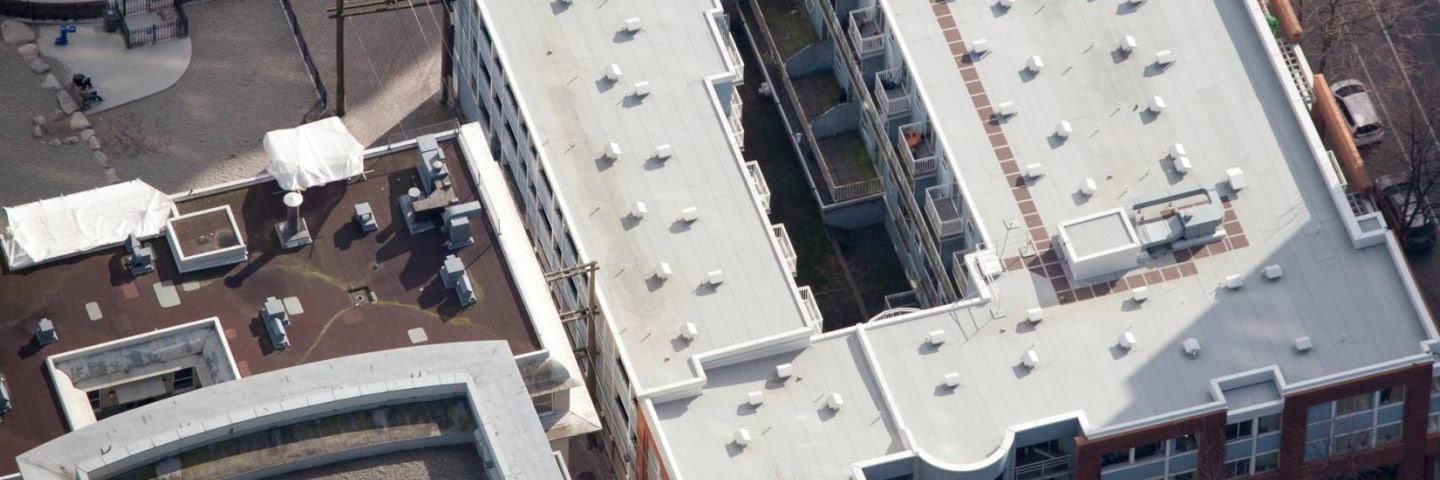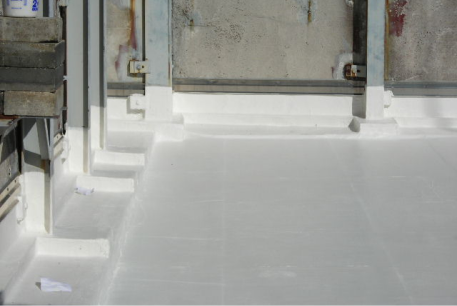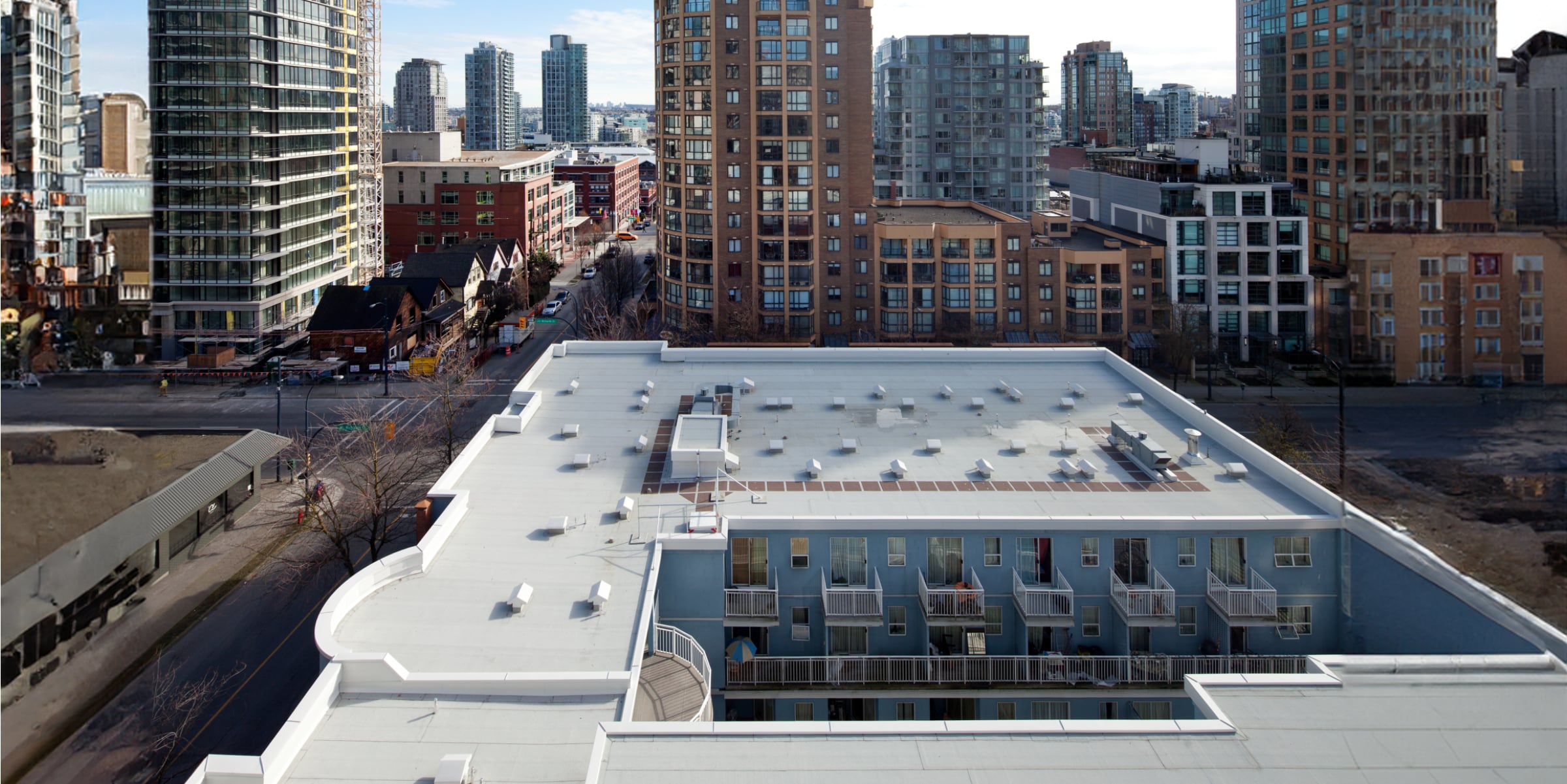
Waterproofing a Roof in Cold Weather
During periods of cooler weather, installation and storage techniques must be modified to ensure proper application of Siplast roofing and waterproofing products.
The following recommendations, developed over many winter seasons, are designed to improve the quality of cold-weather applications. They are intended as guidelines only: the environmental conditions associated with roofing operations can ultimately determine the quality of the finish application. Remember, wind and cloud cover can have a significant effect on both ambient and substrate temperatures as well as material workability.
General guidelines

Warm adhesives tend to flow more easily, facilitating ease of application and reducing wear and tear on equipment. Therefore, pre-heating the adhesive is suggested for most application conditions in cool/cold weather.
Bulk warmers, inline heaters, or other pre-heating equipment, such as thermostatically-controlled warming blankets, should be considered to maintain the proper temperature and viscosity of the adhesive products.
The use of “band heaters” should be avoided for safety reasons. When heating materials, always exercise caution and never leave the materials/equipment unattended.
Siplast adhesives should never be exposed to open flame for heating purposes. Care should be taken to ensure the adhesive does not exceed the flash point (flash point temperatures are listed on the Safety Data Sheets). The adhesive application should be suspended when the adhesive cannot be applied at temperatures allowing for even distribution at proper application rates.

"Fly" the pre-cut roofing sheets by placing them into the adhesive rather than rolling them into position. "Flying in" sheets is an effective, efficient technique that is equally appropriate in warmer weather.
Note: Refer to the PA-311 Adhesive(s) and SFT Adhesive product information sheets for application usage rates and monitor application to prevent over-application of adhesive
Self-Adhesive Membrane Applications
When using Pro Base products with the Syntan Acrylic Coating, the Parapro Roof Membrane System should be installed the same day as the Pro Base SA or Pro Base TS SA sheet.
Parapro Roof Membrane Resin, Parapro Flashing Resin and Terapro Base Resins are available in summer and winter grades. Summer grade resins may be applied when the ambient temperature is between 59°F (15°C) and 104°F (40°C) and the substrate temperature is between 59°F (15°C) and 122°F (50°C). Winter grade resin may be applied when the ambient temperature is between 23°F (-5°C) and 68°F (20°C) and the substrate temperature is between 23°F (-5°C) and 77°F (25°C).
Recommended ambient application temperatures for summer and winter grade material overlap from 59°F to 68°F. At ambient temperatures below 59°F, winter-grade resin should always be used. Paracoat, Pro Primer R, Pro Primer W, Pro Primer T, Pro Matrix Flashing Resin, Pro Color Finish Resin, and Pro Paste Resins are not produced in winter and summer grades. Please refer to the Parapro and Terapro Installer's Guides for specific details regarding application temperatures and catalyzation. Paracoat Roof Coating may be applied when the ambient temperature is between 32°F (0°C) and 95°F (35°C) and the substrate temperature is between 32°F (0°C) and 104°F (40°C).
Asphalt Applications
Special precautions must be taken to ensure that Type IV asphalt maintains a minimum acceptable 400°F (204°C) temperature at the point of sheet application. Asphalt must not be overheated to compensate for cold weather conditions.
The use of insulated handling equipment is strongly recommended. Hot luggers, mop carts, and kettle-to-roof supply lines should be insulated. Hand mops used in cool weather should be smaller than those used in the summer season to facilitate short mopping leads. Luggers and mop carts should be less than half-filled at all times.







